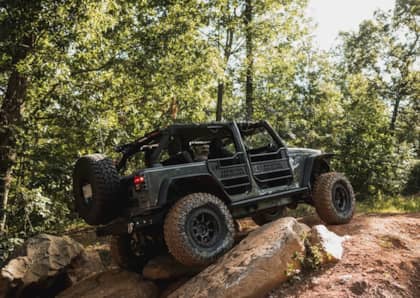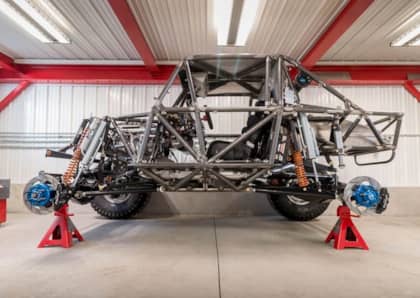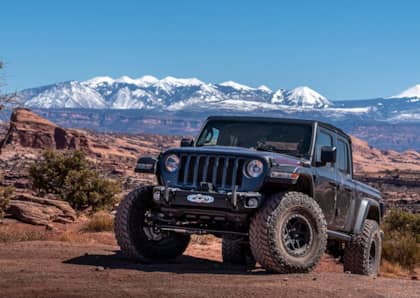The Differences Between Running 37” and 40” Tires on Your Off-Road Rig
Nothing commands respect on the trail like 40-inch tall tires, but it takes a lot more to go from a 37-inch tire to a 40-inch tire than it does to go from a stock sized tire to a 37-inch tall tire. We aren’t just talking about a lift kit, the weight and leverage from such a large diameter tire requires upgrades to axles, gearing, and braking in order to safely run such a large tire.
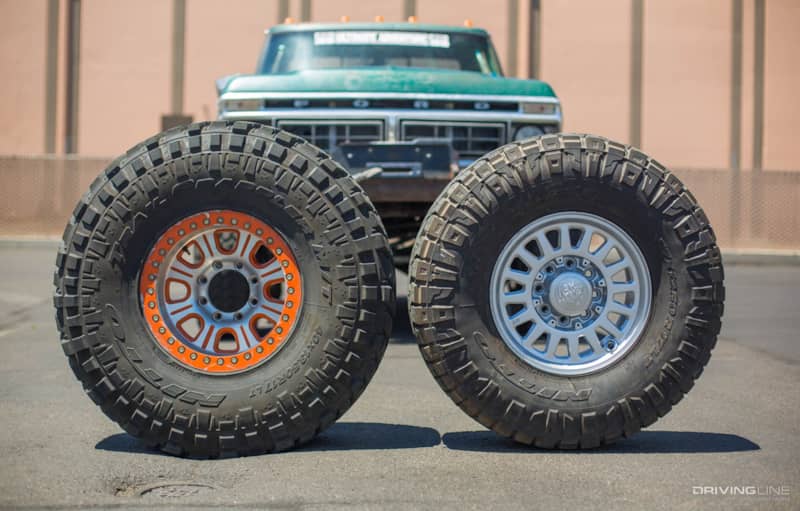
We tested a 40-inch Nitto Trail Grapplers against a set of 37-inch Nitto Ridge Grapplers on our ’77 Ford F-150 and compared acceleration, ground clearance, and wheeling prowess to quantify the differences in tire size.
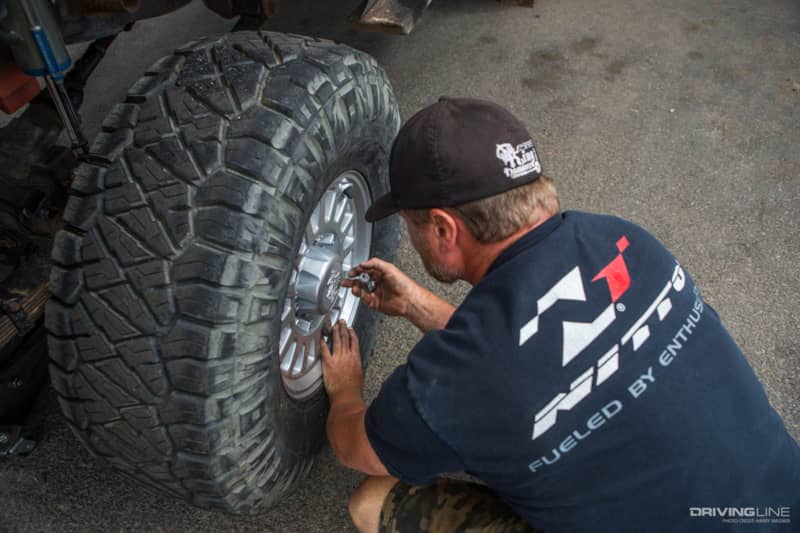
This F150 came with 235/75-15 tires that are only 29-inches tall, far smaller than the offering on a modern 4x4 like the Jeep Wrangler. But like the Wrangler, our old Ford from the factory with a really good drivetrain that can reliably run 37-inch tall tires with the right upgrades. The F-150 came equipped with a 351W V8, NP435 four speed with a granny first gear, and a gear driven NP205 transfer case. Axles were a high pinion Dana 44 front with disc brakes and a big bearing 9” rear. We say “were” because after upgrading to 40-inch tires the only thing that is left is the NP205 transfer case.
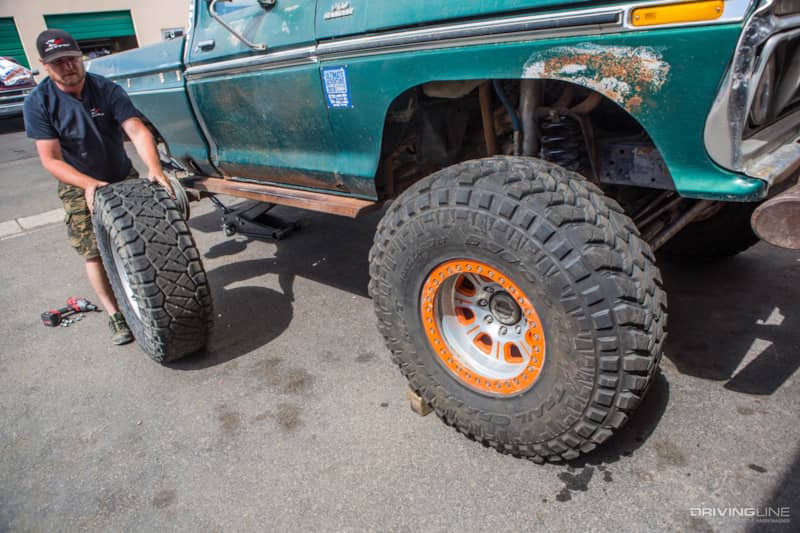
Why is that? Mainly in order to combat the weight and leverage of the larger tires on the trail and on the road. 37-inch Nitto Ridge Grapplers were mounted on 17x8.5 AEV Salta HD wheels that add up to about 109 pounds. The 40-inch Nitto Trail Grapplers normally run on the Ford are mounted on cast aluminum 17x8.5 Raceline Monster wheels which adds up to about 145 pounds, which is 33% more than the 37-inch Ridge Grapplers on the AEV wheels. Note that Raceline also makes the Monster wheel in a forged version that weigh less, but they are about twice the cost. As the old adage goes, “speed costs money, how fast (or in this case, large) do you want to go?”
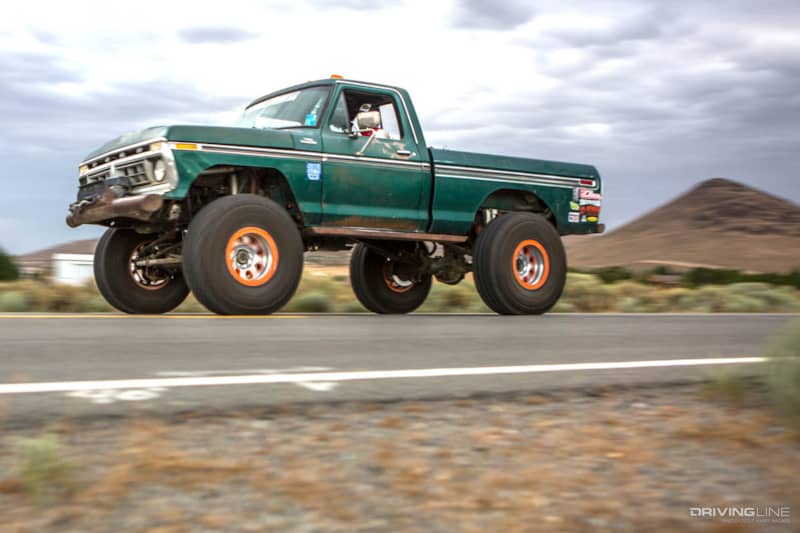
Unsprung weight, which is the weight of the axles, brakes, tires, and wheels has to be controlled by the suspension. The heavier those components are, the harder the suspension has to work. That isn’t to say that a light tire is necessarily better though, it is a balancing act. Too heavy of a tire can hinder performance, but a light tire might seem great… right up to the point you puncture the sidewall or wear it out after only 10,000 miles of driving. Also, tires and wheels are rotating mass, so the larger and heavier they are the more work the vehicle has to do to accelerate and the harder the brakes have to work to stop you.
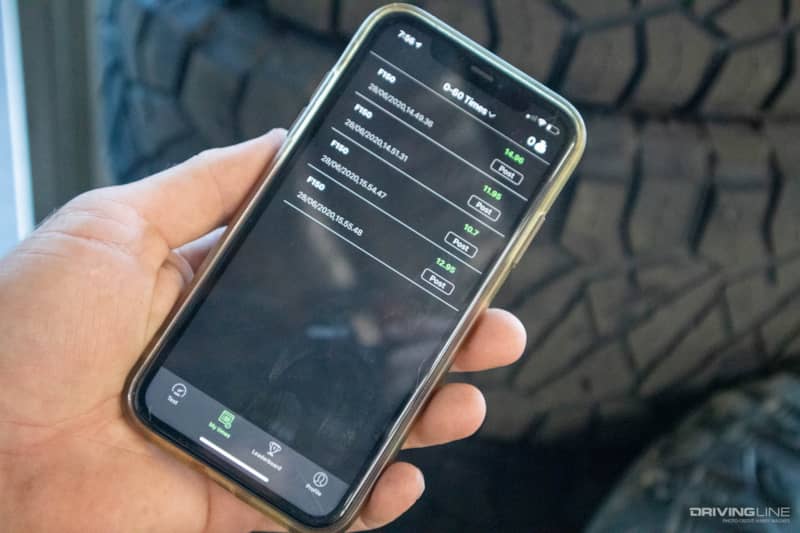
We ran 0-60 acceleration tests with both sets of tires and wheels and the acceleration with the 37-inchers was a second faster than with the 40-inch tires. We actually expected the difference to be more dramatic, but the truck was built around 40-inch tires and the gearing with the 37s required an additional shift that ate up time.
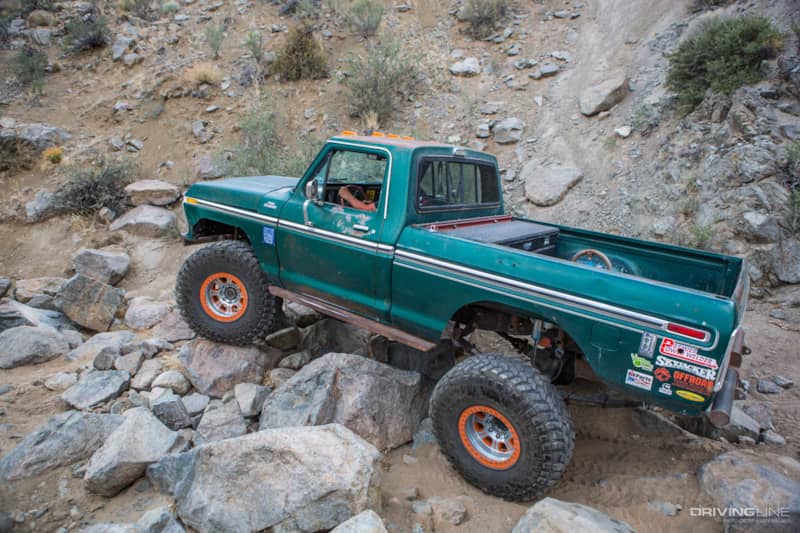
When we say “the truck was built around 40-inch tires” we mainly mean the Super Duty axles that Aaron Lechner at Axleline built for us with 5.38 Sierra gears, Detroit Lockers, and chromoly axle shafts. Axleline also upgraded our vacuum brakes to hydroboost using factory Super Duty parts to safely stop the truck on 40-inch tall tires. The steering pump was upgraded with a PSC pump with higher pressure and volume to reliably power the hydroboost and the hydraulic assist ram used to turn the big tires in the rocks. LA Speed built a 460ci V8 engine for us with Edelbrock heads, a Comp Cams roller cam, and FI Tech and Nate’s Precision in Reno swapped the engine in with parts from L&L. Over the years the truck has also been upgraded with a ZF5 transmission from Axleline, an Off Road Design Doubler, and full custom suspension from Rock Hound Off-Road with 3-inch bypass shocks front and rear.
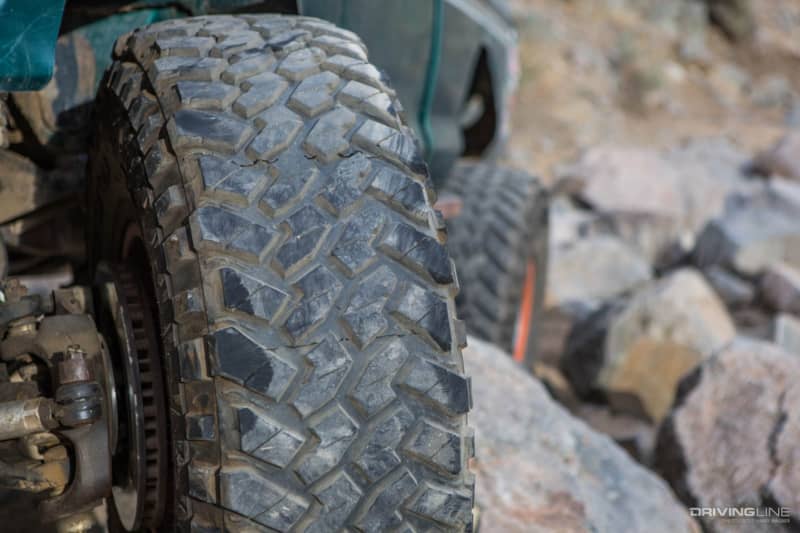
After the acceleration testing, we hit the trail, where the loss of ground clearance with the 37-inch tires was noticeable. On the trail, the tradeoff for larger tires is that the added weight and leverage tax the drivetrain when they are bound up in the rocks. Sometimes you break traction, but other times you may break an axle shaft. The main advantage of bigger tires is more ground clearance, but the Dana 60 that was swapped in the front has 1 1/4-inch less ground clearance than the original Dana 44, so the 40-inch Nitto Trail Grapplers only added 1/4-inch of ground clearance under the differential. There are other advantages to 40-inch tires on the trail though as well; the larger circumference makes ledges and holes effectively smaller, making them easier to overcome. Much in the same way that you would see a marked improvement in off-road prowess upgrading from factory sized tires to 37-inch tall tires.
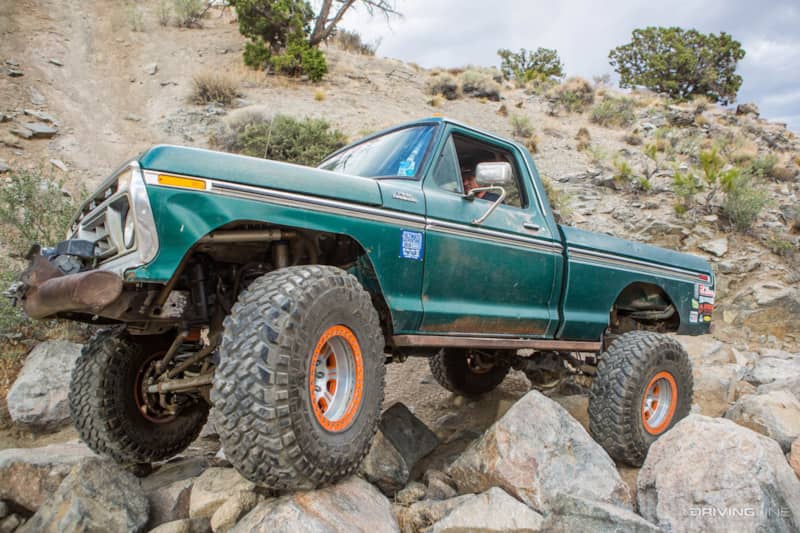
If it sounds like we are trying to talk you out of running 40s, we aren’t. We love them on our Ford, and encourage you to run whatever size tire you desire, just know that it's going to take a little extra oomph to run 40s.
Additional photography by Mike Henderson




